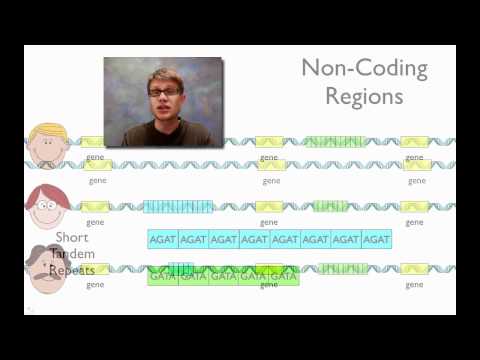13.11: Genetic Information Used for Identification
- Page ID
- 44486
Outline how genetic information is used in personal identification
DNA as a Forensic Tool
Information and clues obtained from DNA samples found at crime scenes have been used as evidence in court cases, and genetic markers have been used in forensic analysis. Genomic analysis has also become useful in this field. In 2001, the first use of genomics in forensics was published. It was a collaborative attempt between academic research institutions and the FBI to solve the mysterious cases of anthrax communicated via the US Postal Service. Using microbial genomics, researchers determined that a specific strain of anthrax was used in all the mailings.
Mitochondrial Genomics
Mitochondria are intracellular organelles that contain their own DNA. Mitochondrial DNA mutates at a rapid rate and is often used to study evolutionary relationships. Another feature that makes studying the mitochondrial genome interesting is that the mitochondrial DNA in most multicellular organisms is passed on only from the mother during the process of fertilization. For this reason, mitochondrial genomics is often used to trace genealogy.
DNA Fingerprinting
DNA fingerprinting (also called DNA profiling, DNA testing, or DNA typing) is a forensic technique used to identify individuals by characteristics of their DNA. A DNA profile is a small set of DNA variations that is very likely to be different in all unrelated individuals, thereby being as unique to individuals as are fingerprints (hence the name for the technique).
Although 99.9% of human DNA sequences are the same in every person, enough of the DNA is different that it is possible to distinguish one individual from another, unless they are monozygotic (“identical”) twins. DNA fingerprinting uses repetitive sequences that are highly variable, called variable number tandem repeats (VNTRs). Modern law enforcement in particular uses short tandem repeats (STRs). STR loci are very similar between closely related individuals, but are so variable that unrelated individuals are extremely unlikely to have the same STRs. The combination of STRs used by law enforcement enable identification though because even closely related individuals will not share all the same STR loci.
The modern process of DNA fingerprinting was developed in 1984 by Sir Alec Jeffreys, while he was working in the Department of Genetics at the University of Leicester. DNA fingerprinting can be used to identify a person or to place a person at a crime scene and to help clarify paternity. DNA fingerprinting has also been widely used in the study of animal and floral populations and has revolutionized the fields of zoology, botany, and agriculture.
Watch this video on the process of DNA fingerprinting and DNA profiling
Contributors and Attributions
- Biology. Provided by: OpenStax CNX. Located at: http://cnx.org/contents/185cbf87-c72e-48f5-b51e-f14f21b5eabd@10.8. License: CC BY: Attribution. License Terms: Download for free at http://cnx.org/contents/185cbf87-c72...f21b5eabd@10.8
- Modification of DNA profiling. Provided by: Wikipedia. Located at: https://en.Wikipedia.org/wiki/DNA_profiling. License: CC BY-SA: Attribution-ShareAlike
- DNA Fingerprinting. Authored by: Bozeman Science. Located at: https://youtu.be/DbR9xMXuK7c. License: All Rights Reserved. License Terms: Standard YouTube License


